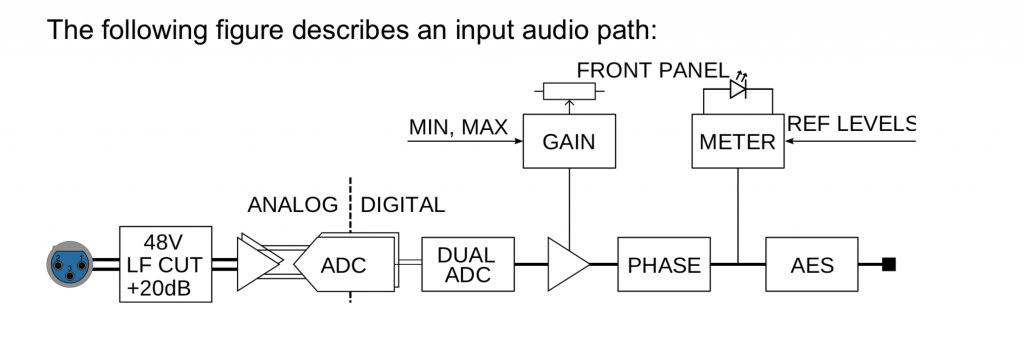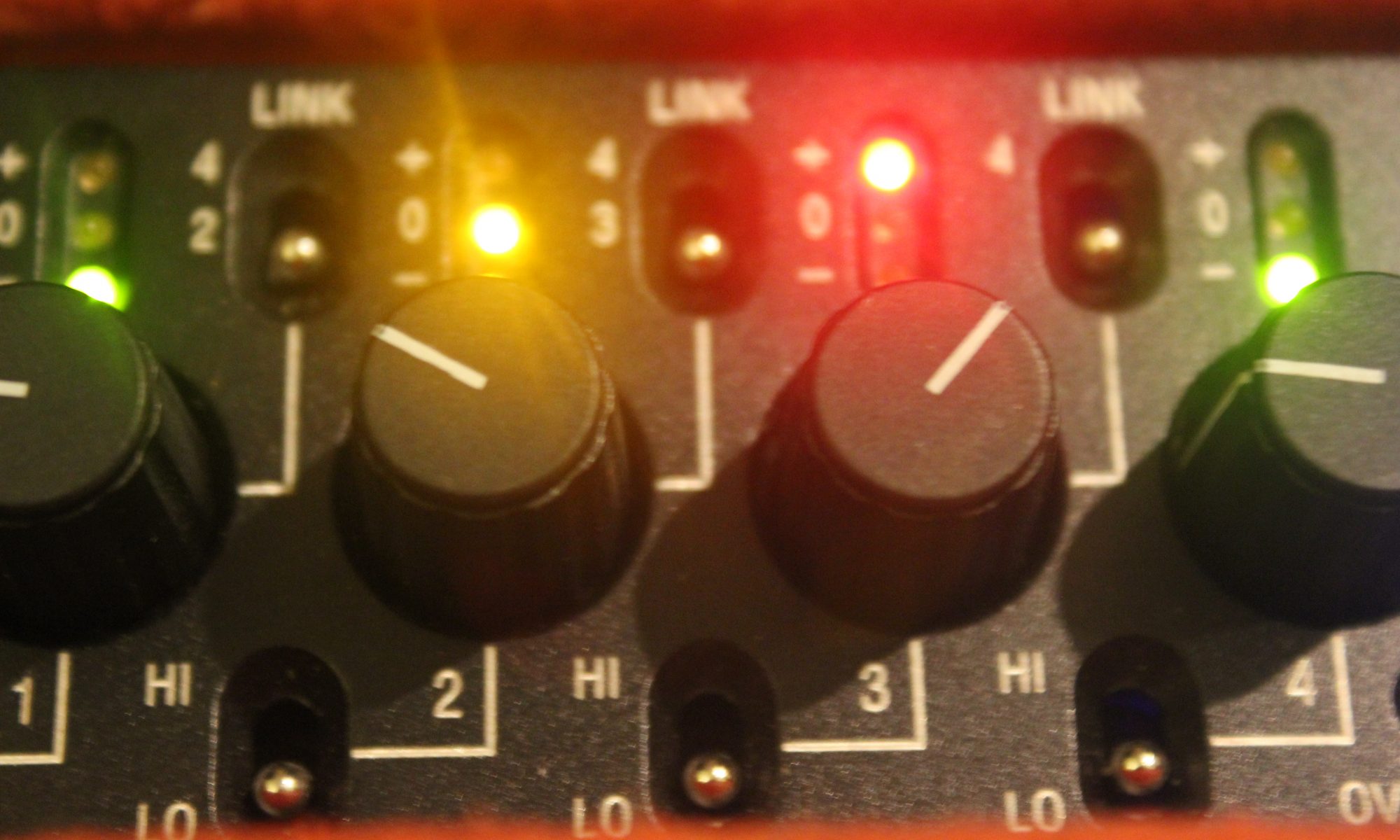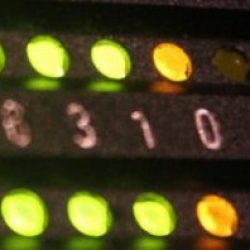Traditionally, when setting up input gain the engineer sets it so that a ‘healthy’ voltage is coming into the system. A certain level of headroom is maintained in order to allow for unexpected peaks. 24bit analogue to digital converters have allowed us more flexibility in leaving headroom before system noise could become a problem.
Here’s a more traditional input diagram from the previous generation SX-R4 recorder:
I’ve been using the latest generation of Sonosax preamplifiers for a while now. I’ve known that they can handle a huge dynamic range since using them but I’ve only just found this in the AD8+ manual:
 The thing which is initially quite alarming is that the only gain before the analogue to digital converters (ADC) is a switchable +20dB. Most professional equipment will have low cut filters, gain and analogue limiters before the ADC stage. If something overloads the ADC, it becomes digital garbage.
The thing which is initially quite alarming is that the only gain before the analogue to digital converters (ADC) is a switchable +20dB. Most professional equipment will have low cut filters, gain and analogue limiters before the ADC stage. If something overloads the ADC, it becomes digital garbage.
In this case, the paired ADCs can take a considerable amount of level- +21dBu (which is 24.6V) and +1dBu (2.46V) with the +20dB option enabled. To put this into context, most amplifiers are designed to take +18dBu max at input. So the only “real” gain setting is the +20dB option. In the unlikely event that an even higher voltage is coming in, there are analogue pots on the line inputs of the SX-R4+ (the small 5 and 6 knobs on the front).
This means more information is coming into the ‘digital world’ earlier in the chain and there’s no limiter- everything is captured as it comes in. The gain on any of the knobs, rather than controlling an amplifier is effectively a multiply function. Sometimes you’ll need to add gain just to hear a signal, however it now doesn’t really matter where it is added as long as the signal isn’t turned back into an analogue one, it will have the same result in post production as it will from the machine directly. Even if it’s sent over AES3, it’s the same 1s and 0s. Whether your post production facility want to work this way is another matter.
So, it should be possible to use an AD8+ as an analogue front end and get the same results without putting any gain on the inputs and adding ‘digital gain’ in another mixer or computer



Hi,
I always wondered how the gain structure adjustment works in new breed of Sonosax preamplifiers/converters. In the manual, it says that without the +20dB gain switch, the A/D Dynamic Range is 135.5 dB, and with the switch disabled – 129.5 dB. Does it mean that without the +20dB you can capture more dynamic sources, essentially having the whole of the preamp digitized, coming thru two AD converters? So the +20 dB switch is just for practicality, so you do not have to multiply (digital gain up) much in the box / post production? I use Zaxcom Nomad and the concept is similar, but the procedure reversed in a way – you can attenuate certain tracks up to 24dB, so you get more dynamic range on them, and the 24bit ‘window’ of the 32bit mantissa (mixer) is relocated. Going back to AD8+, if I’d like to use it as analog front end to an AES Input capable recorder like Nomad, would switching off the +20dB gain have the same effect as as attenuating tracks up to 24dB inside Nomad, again moving the 24bit signal over a larger 32 bit mixer pool?
Hi Bartosz, the 20dB gain is effectively a high or low gain setting for the whole system. Even though it’s possible to get 135dB of dynamic range without the boost, with some quieter sources there will be a noticeable noise floor without the 20dB engaged